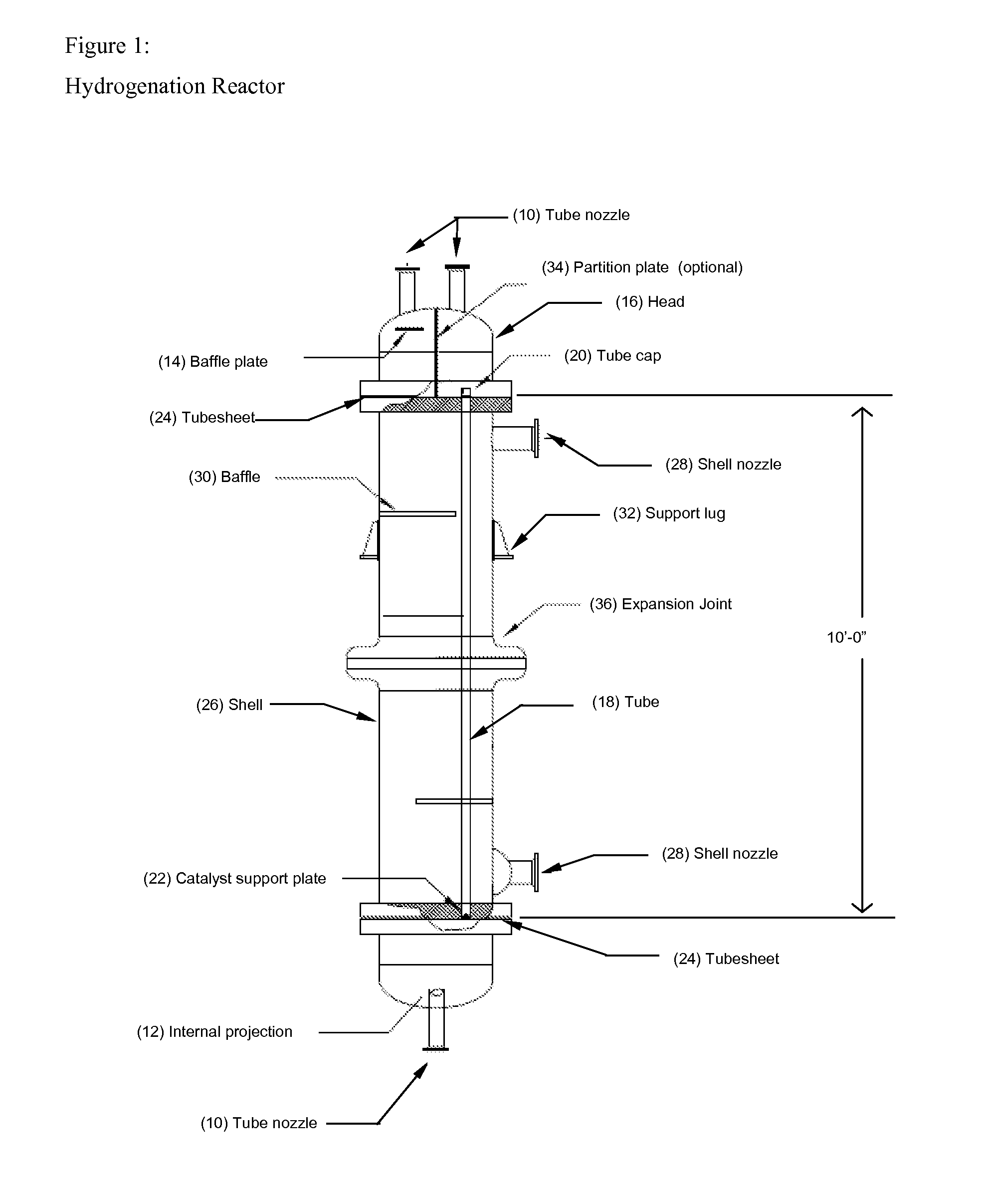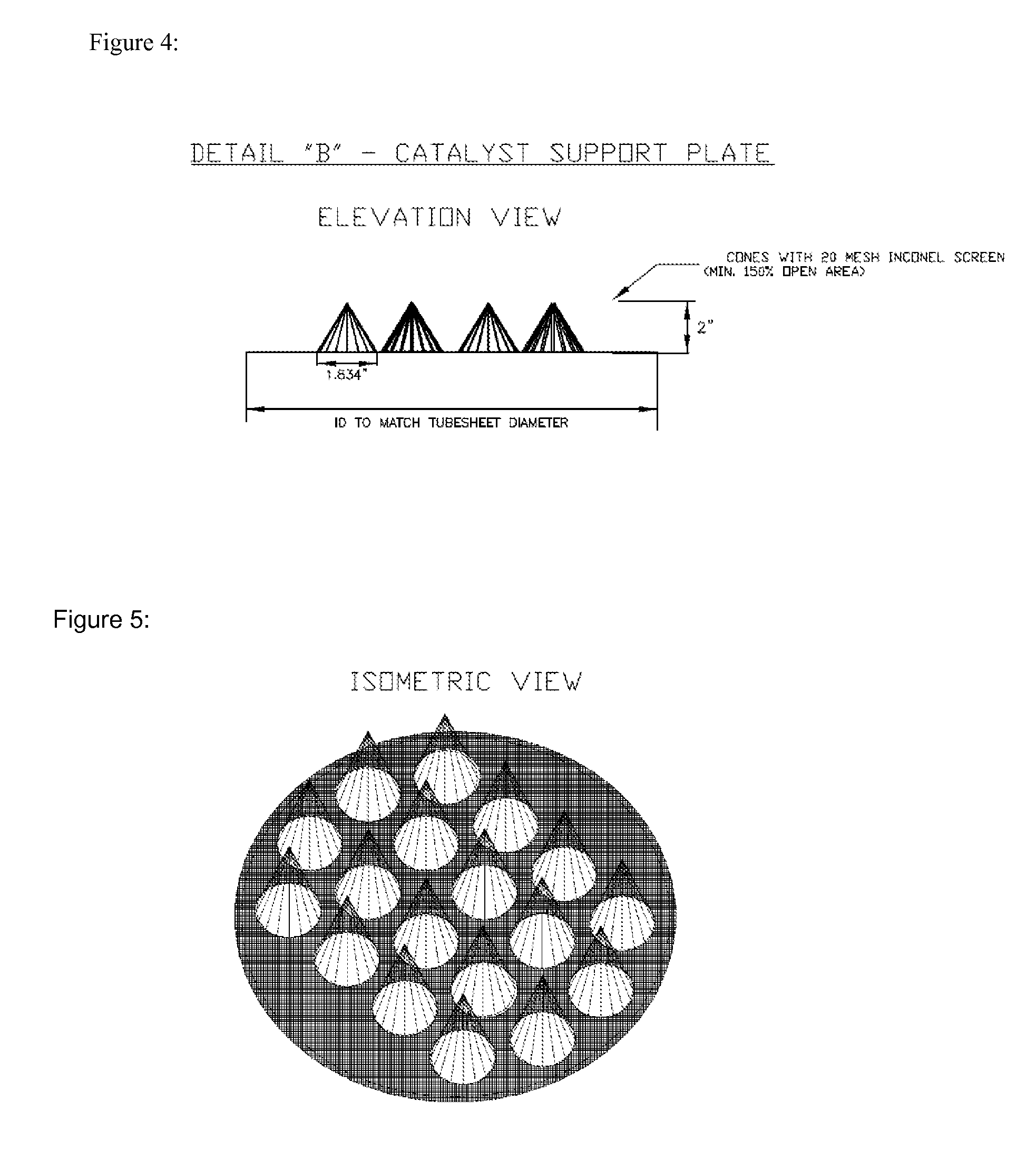Hydrogenation process for fluorocarbons
a technology of fluorocarbons and hydrocarbons, which is applied in the field of fluorinated olefins, can solve the problems of reduced yield of desired products, inconvenient recycling of reaction products, and disadvantages of the type described above, and achieves improved yield, improved surface area, and reduced pressure drop
- Summary
- Abstract
- Description
- Claims
- Application Information
AI Technical Summary
Benefits of technology
Problems solved by technology
Method used
Image
Examples
Embodiment Construction
[0045]Referring to the drawings accompanying this disclosure, preferred embodiments of the invention are illustrated as follows:
[0046]FIG. 1 shows one embodiment of a tube and shell reactor useful in the process of the present invention. As shown therein, the following component parts are employed:[0047]10—Tube nozzle[0048]12—Internal projection[0049]14—Baffle Plate[0050]16—Head[0051]18—Tube[0052]20—Tube cap[0053]22—Catalyst support plate[0054]24—Tubesheet[0055]26—Shell[0056]28—Shell nozzle[0057]30—Baffle[0058]32—Support lug[0059]34—Partition plate[0060]36—Expansion joint
[0061]FIG. 2 illustrates a preferred embodiment of the tubesheet layout for the reactor shown in FIG. 1.
[0062]The bottom tubesheet should be ground down to a smooth finish. This will allow for a good seal between the tubes (18) holding the catalyst and the catalyst support plate (22).
[0063]FIG. 3 illustrates one preferred embodiment of tube caps used in the reactor shown in FIG. 1. The tube caps aid in the proper di...
PUM
| Property | Measurement | Unit |
|---|---|---|
| diameter | aaaaa | aaaaa |
| height | aaaaa | aaaaa |
| diameter | aaaaa | aaaaa |
Abstract
Description
Claims
Application Information
 Login to View More
Login to View More - R&D
- Intellectual Property
- Life Sciences
- Materials
- Tech Scout
- Unparalleled Data Quality
- Higher Quality Content
- 60% Fewer Hallucinations
Browse by: Latest US Patents, China's latest patents, Technical Efficacy Thesaurus, Application Domain, Technology Topic, Popular Technical Reports.
© 2025 PatSnap. All rights reserved.Legal|Privacy policy|Modern Slavery Act Transparency Statement|Sitemap|About US| Contact US: help@patsnap.com



